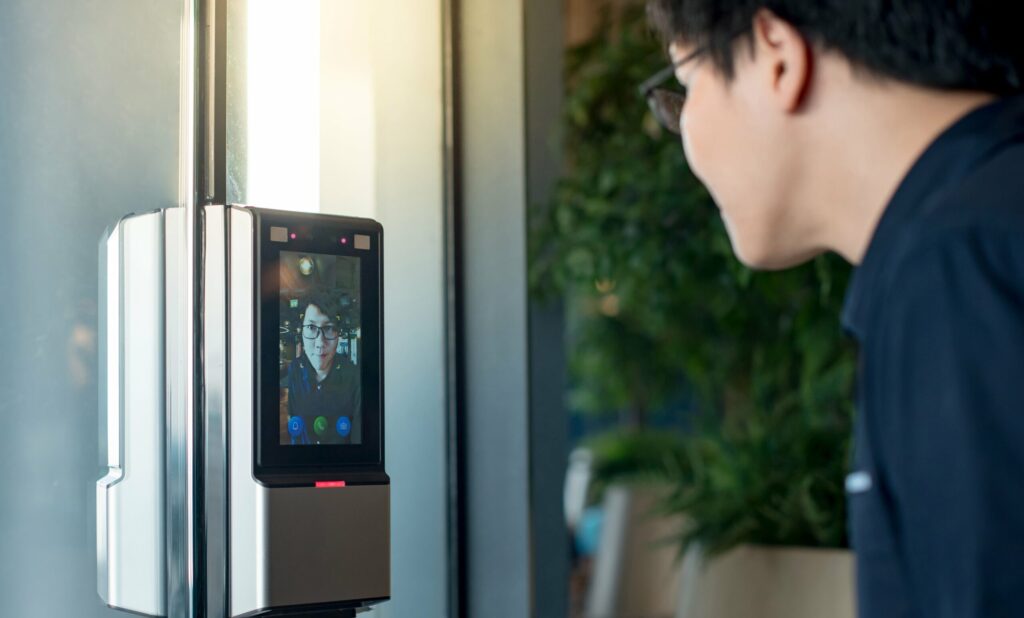A major technological shift is happening across government buildings—one that promises faster check-ins, tighter security, and fewer lines. The government has officially rolled out facial recognition systems at several public offices, changing the way people access services and facilities.
This move is part of a broader push to make government services smarter and safer using the latest in artificial intelligence (AI) and biometric technology. The facial recognition system, which can identify people using their facial features, is now being used to verify identities, manage building access, and monitor movements within official premises.
While it may feel like something out of a science fiction movie, this technology is real, and it’s already in use.

Why the Switch to Facial Recognition?
Traditional security systems, such as ID cards and passwords, are easy to forget, lose, or even hack. In contrast, your face is unique and always with you. With facial recognition, there’s no need to scan ID cards or type in credentials. It’s as simple as walking into a building and letting a camera do the work.
Government officials say this change will improve both efficiency and security. Not only will it reduce waiting times for employees and visitors, but it also ensures that only authorized individuals can access certain areas.

In addition, the system can alert security personnel in real time if someone who is flagged or unauthorized tries to enter a restricted zone.
How Does It Work?

The system uses advanced cameras and AI algorithms to capture and analyze facial features. These cameras are placed at key entry points and work by comparing live images of faces to a database of approved individuals.
Here’s a step-by-step of how it works:
- A person walks up to the entrance.
- The camera scans their face in a second or two.
- If the face matches the records in the system, the person is granted access.
- If not, security is alerted instantly.
This process happens in real time and is almost instant, making it much faster than traditional check-in methods.
Where It’s Already Being Used
Several major government offices have already adopted the new technology, especially those that deal with high foot traffic, sensitive data, or VIP access. Visitors and employees have started to notice cameras and scanners placed above entrances and at front desks.
According to reports from insiders, buildings related to finance, national planning, public health, and foreign affairs are among the first to introduce the system.
The plan is to gradually expand this rollout to more departments in the coming months. Officials are also exploring using it in airports, public service centers, and even police stations.
How People Are Reacting
As with any big change, the public response has been mixed. Some people are excited about the convenience. They say it makes sense in a modern, fast-moving world where time is valuable.
Others, however, are more cautious. Concerns around privacy and data security have been raised. What happens to the images? How long are they stored? Who has access to them?

One government spokesperson assured the public that all facial data is handled under strict privacy rules. “The system is fully secure and follows national data protection standards,” the official said. “No one’s information will be shared or stored unnecessarily.”
Still, many believe it’s important to stay informed and ask the right questions about how such systems are managed.
Pros and Cons of the New Technology
Benefits:
- Faster Check-Ins: No need to wait in line or show ID repeatedly.
- Improved Security: Unauthorized visitors can be spotted and stopped in real time.
- No Contact: Especially useful in a post-pandemic world where hygiene matters.
- Better Access Control: Sensitive areas can be restricted to select personnel.
Concerns:
- Privacy Risks: Images and data could be misused if not handled properly.
- System Errors: What if someone’s face isn’t recognized correctly?
- Cost: Setting up and maintaining such systems is not cheap.
- Legal Questions: Not all citizens may agree to have their facial data collected.
Government officials have promised regular audits and transparency reports to address these issues, but citizens will likely continue to watch closely.
The Bigger Picture: Part of a Smarter Nation
Facial recognition isn’t just about getting into a building. It’s part of a bigger plan to create a “smart government” powered by AI, automation, and real-time data.
In recent years, many public services have gone digital. From renewing your ID online to booking a doctor’s appointment through a government app, technology is playing a bigger role in how people interact with the state.
Adding facial recognition to physical locations is just another step in making things smoother, faster, and safer.
Experts say that as the technology improves, we might see it used for everything from school attendance to border control.
What Comes Next?
For now, the rollout is limited to a few buildings. But that’s expected to change quickly. Officials are already planning for larger deployment across the country.
They are also working on making the system more inclusive, ensuring that it works well across different skin tones, ages, and facial features. There are tests underway to prevent errors or mismatches, which have been a concern in other countries using similar systems.
The next phase will also focus on educating the public—explaining how the technology works and what safeguards are in place to protect people’s privacy.
Final Thoughts
Love it or hate it, facial recognition in government buildings is here to stay. It promises faster access, tighter security, and a glimpse into what the future of public services could look like.
But it also raises real questions about privacy, fairness, and control.
As with any powerful technology, how it’s used—and who controls it—will determine whether it helps society move forward or creates new problems.
Also read: Dubai Future Foundation Hosts Youth Tech Challenge














